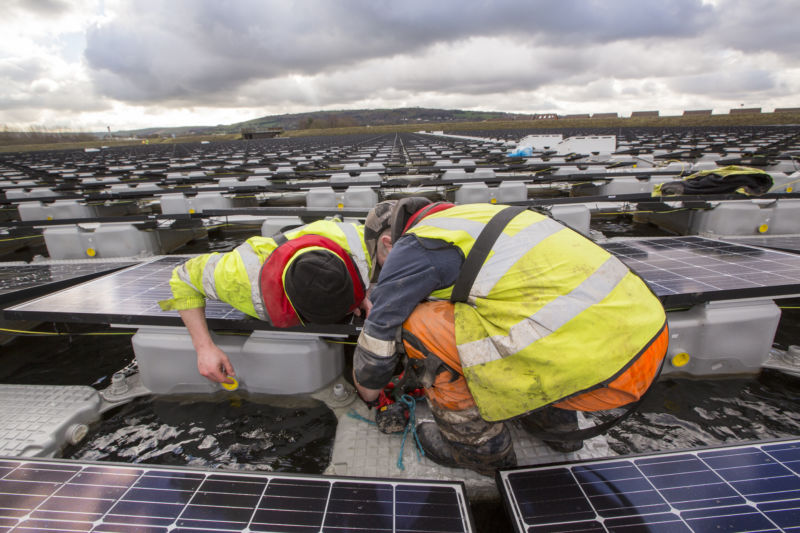Floating solar is more than panels on a platform—it’s hydroelectric’s symbiont

Enlarge / A view of the new floating solar farm being grid connected on Godley Reservoir in Hyde, on February 10, 2016 in Manchester, England. (credit: Ashley Cooper / Barcroft Media / Barcroft Media via Getty Images)
A total of 1.1 gigawatts (GW) of solar have been installed around the world as of September, according to a new report by the World Bank (PDF). That’s similar to the amount of traditional solar panel capacity that had been installed around the world in the year 2000, the report says. The World Bank expects that, like traditional solar 18 years ago, we’re likely to see an explosion of floating solar over the next two decades.
That’s because floating solar is not simply “solar panels on water.” Solar panels prevent algae growth in dammed areas, and they inhibit evaporation from occurring in hotter climates. (According to Yale’s School of Forestry and Environmental Studies, major lakes in the southwestern US like Lake Mead and Lake Powell can lose more than 800,000 acre-feet of water to evaporation per year, and the adorably-described “floatovoltaics” could prevent up to 90 percent of that evaporation.”) Additionally, floating solar avoids taking up space on land that is priced at a premium. In Northern California, for example, a floating solar installation was added to a nearby reservoir because the land around it was better used for growing grapes.
Another benefit of floating solar is that ground doesn’t have to be leveled before the plant is installed. Usually, fixed-tilt panels are attached to a floating platform that’s moored to the bottom of the reservoir. Most systems send electricity through floating inverters, although in some smaller installations the inverters are situated on land.
Read 9 remaining paragraphs | Comments